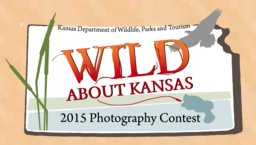Visit these trout fishing hot spots
Kansas offers trout fishing at more than 30 public fishing lakes
Winter weather may not be synonymous with fishing for most people, but the Kansas Department of Wildlife, Parks and Tourism offers anglers winter trout fishing opportunities that make putting up with the cold worth it.
Trout are stocked in select waters during the trout season, which is open through April 15. Anglers can try their luck at trout fishing in Type 1 waters, which require all anglers to possess a $12.50 trout permit, and in Type 2 waters, which require only those fishing for or possessing trout to purchase the permit. The $12.50 permit is valid for the calendar year and can be purchased wherever licenses are sold and online at ksoutdoors.com.
Trout fishing opportunities are available at the following lakes:
TYPE 1 LAKES: TROUT PERMITS REQUIRED OF ALL ANGLERS
- Cedar Bluff Stilling Basin
- Dodge City Lake Charles
- Ft. Scott Gun Park Lake
- Glen Elder State Park (SP) Pond
- Kanopolis Seep Stream
- KDOT East Lake in Wichita
- Lake Henry in Clinton SP
- Mined Land WA Unit #30
- Pratt Centennial Pond
- Walnut River Area in El Dorado SP
- Willow Lake at Tuttle Creek SP
- Webster Stilling Basin
- Sandsage Bison Range and WA Sandpits (Periodically Dry)
- Vic’s Lake and Slough Creek in Sedgwick County Park
- Topeka Auburndale Park
- Garnett Crystal Lake
TYPE 2 LAKES: TROUT PERMITS REQUIRED ONLY FOR TROUT ANGLERS
- Sherman County Smoky Gardens Lake
- Solomon River between Webster Reservoir and Rooks County #2 Road
- Ft. Riley Cameron Springs
- Lake Shawnee – Topeka
- Salina Lakewood Lake
- Moon Lake on Fort Riley
- Scott State Fishing Lake
- Scott State Park Pond
- Hutchinson Dillon Nature Center Pond
- Atchison City Lake # 1
- Belleville City Lake (Rocky Pond)
- Holton-Elkhorn Lake
- Syracuse Sam’s Pond
- Cimarron Grasslands Pits
- Colby Villa High Lake
- Great Bend Stone Lake
- Herington – Father Padilla Pond
TROUT Permit required year-round
- Cherokee County – Mined Land Wildlife Area No. 30*
*Because trout survive through the summer here, a trout permit is required year-round for anglers utilizing the lake.
Residents 16-74 years old, and all non-residents 16 and older must also have a valid fishing license. The daily creel limit is five trout unless otherwise posted. Anglers 15 and younger may fish without a trout permit, but are limited to two trout per day, or they may purchase a permit and take five trout per day. Possession limit for trout is 15.
For information on trout stocking schedules, visit www.ksoutdoors.com and click “Fishing/Special Fishing Programs for You/ Trout Fishing Program.”

